Should I Wrap My Hydrangeas For Winter?
Should I Wrap My Hydrangeas For Winter?
Will covering your blue Hydrangea help protect the flowers?
All over Cape Cod people are asking if they should be wrapping, covering or otherwise protecting their Hydrangea shrubs. The blue mophead and lacecap Hydrangeas are the Cape’s signature shrub, and many people were disappointed that they didn’t flower well in the summer of 2023.
This type of Hydrangea is said to flower on “old wood.” That term a bit misleading in that many people assume that when they see bare, older stems in the spring that these will be producing the flowers. It’s more accurate to say that these Hydrangeas form their flower buds in July and August for the following summer. If you look at your shrubs right now, you’ll see small buds where the leaves join the stems. Those buds contain the germ of next year’s flower, and successful blooming depends on those buds making it through the winter.
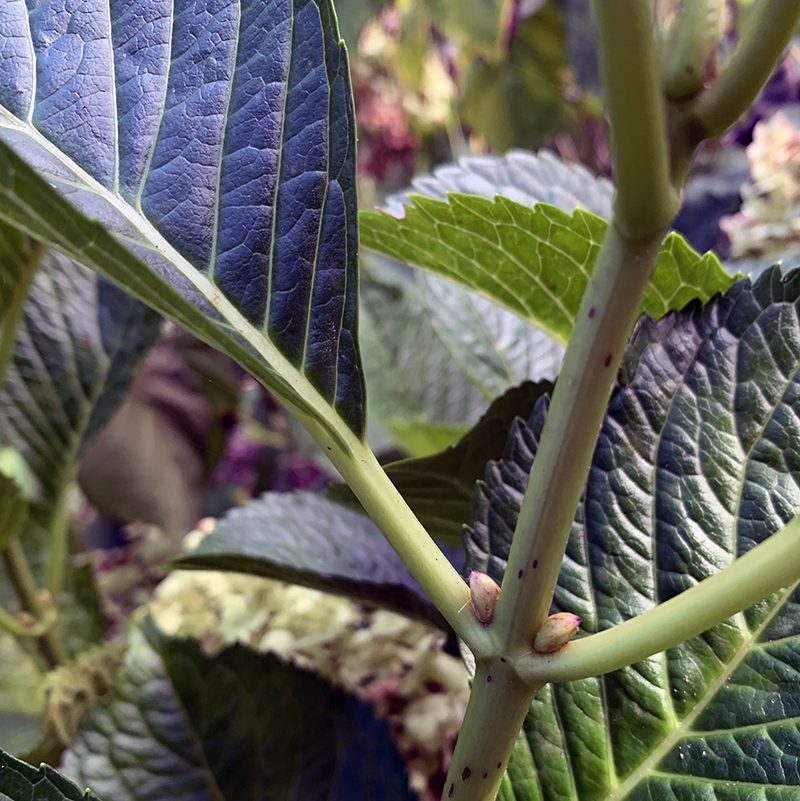
Cold winter temperatures and wind can zap those buds.
When winter temperatures dip much below 15° Fahrenheit, especially for a long period of time, those buds are vulnerable and may die. If the temperatures go below zero, even for one night, those buds will die. If we’ve had a very warm fall and early winter, and then the temperatures plunge, those conditions will also destroy next year’s flowers. Such a polar vortex plunge is what caused the 2023 Hydrangeas not to flower much. And if the plants are in an exposed location, and very cold winds hit them, the buds can be killed.
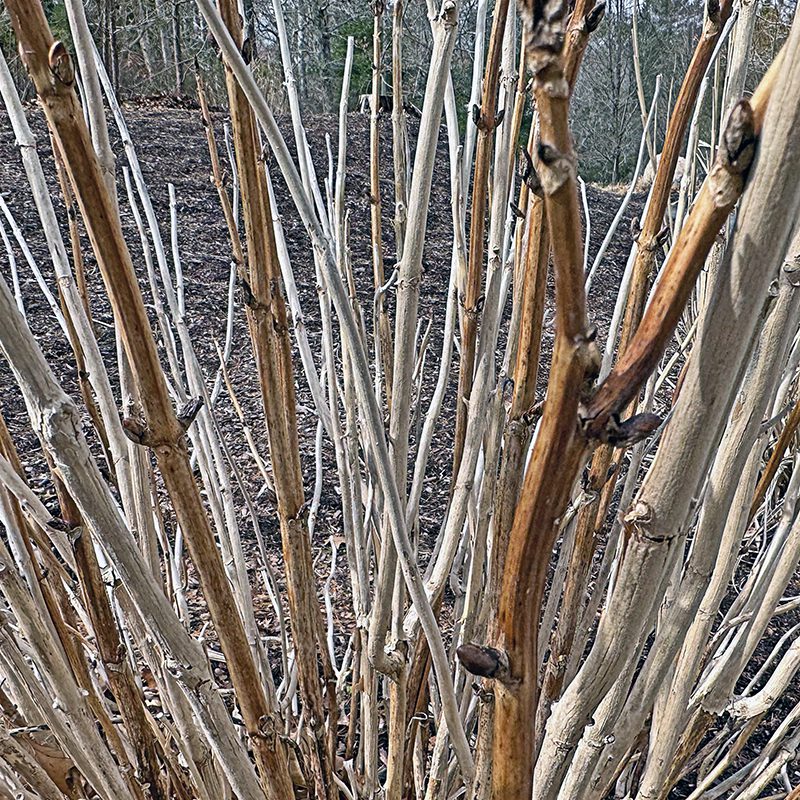
So should I wrap the stems in the fall to protect those buds?
Here’s the truth of the matter: if the temperatures fall into the single digits or below zero, no protection will help. It will be just as cold inside any wrapping as outside, and the buds will be killed. If the winter temperatures stay above 15° Fahrenheit, a covering of hay, chopped leaves, or other loose material around the plants may offer some slight protection, but the more bud-hardy plants will be fine without that protection.
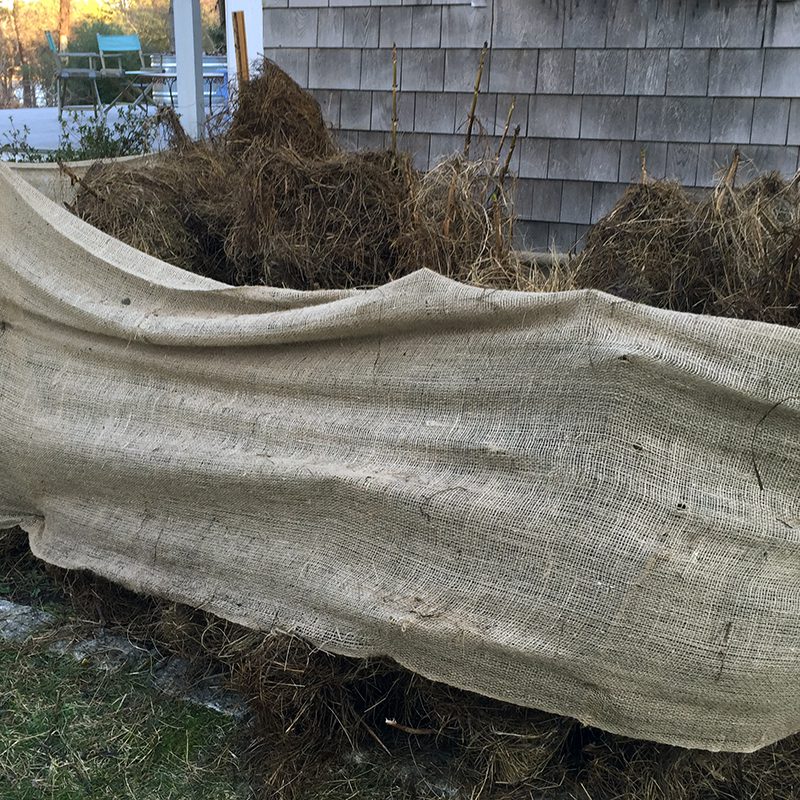
What about using a wind break for Hydrangeas in exposed locations?
A wrapping of some sort that stops the wind can be effective in some cases. But wind breaks function best if they are about six to eight inches away from the plant. So putting stakes around the shrub, and then attaching the cloth or tarp to those stakes, is the best way to stop the wind. Note that a single layer of burlap isn’t thick enough to provide much of a wind barrier.
How about using a heavy tarp or plastic?
The problem with tarps or plastic is that they don’t protect that well and don’t allow the plants to breath. In a polar vortex situation, when temperatures plunge below zero, the air around the Hydrangea will be just as cold as outside of the plastic or tarp. Plants don’t generate heat, so those wrappings can’t keep a shrub warm. In late winter, when the sun is getting warmer, such wrappings may actually keep Hydrangeas too warm. If you’ve ever gotten in your car on a late February day, and had to roll the windows down because the inside of your automobile is too warm, you’ve experienced this greenhouse effect. Such warming during the day, going to below freezing at night, is more harmful for those Hydrangea buds than no protection at all.
A tarp or plastic could be used for a windbreak if it’s not covering the top of the plant, and is attached to stakes around the Hydrangea. But instead of going to all that trouble, and living with the look of less-than-attractive tarps all winter, consider moving your Hydrangeas to a location that is naturally more sheltered by the house or other plants.
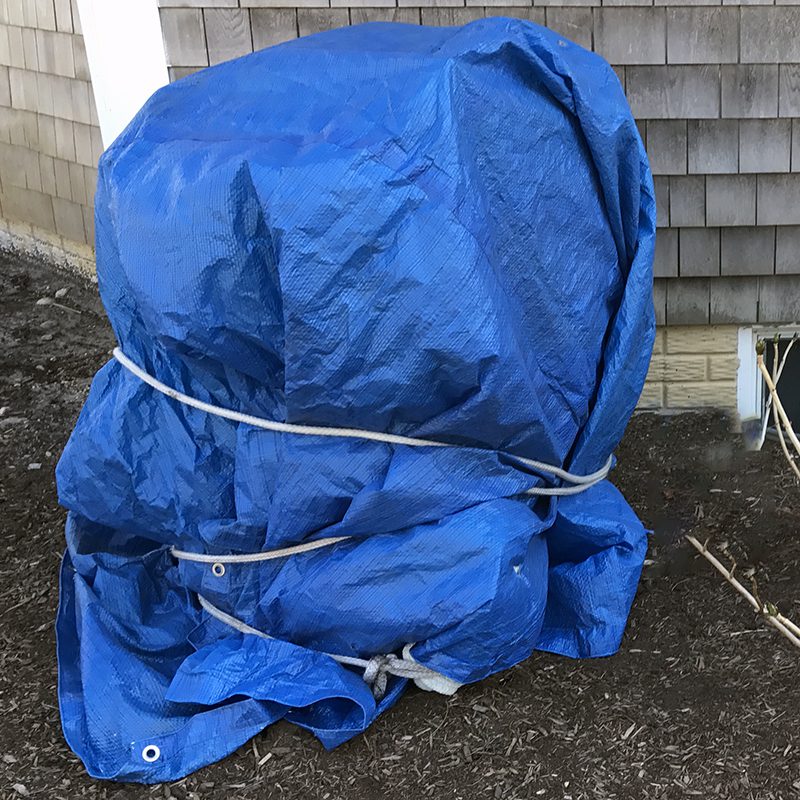
Is snow bad for Hydrangea flowers?
Snow is actually an insulator and will protect Hydrangea buds if it’s deep enough. When the Cape had so much snow in 2015, the blue Hydrangeas were lovely the following summer despite the temperatures dropping into single digits. Since the weather is unpredictable, we have no idea if there will be a snow cover this year or not.
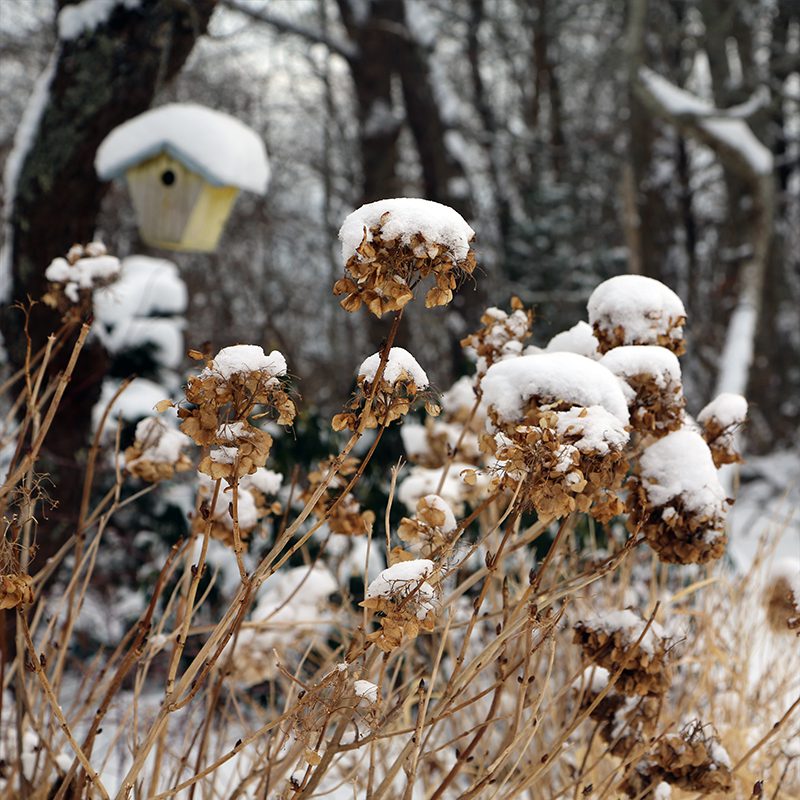
How about spraying with Wilt-Pruf?
Wilt-Pruf is an anti-desiccant. This product helps hold moisture in the leaves of plants, especially broadleaf evergreens. Unfortunately it does not protect Hydrangea buds in very cold temperatures.
No guarantees…but hope for the best.
Unfortunately there are no practices that are guaranteed to protect your Hydrangea buds. You may hear others say “I always wrap my plants and they flower well,” but those people are crediting the wrapping when the winter temperatures were conducive to the buds’ survival anyway. Even the plants that were wrapped in the fall of 2022 had their buds zapped in early February of 2023. So all we can advise is to do what will make you feel better. Build protection, put up a wind screen, fill a cage around the plants with leaves or hay, or just hope for the best.
In my 30 years of gardening on Cape Cod, I’ve experienced 3 “Hydrangea kill winters.” In other words, it doesn’t happen frequently, and the odds are in our favor that many of the buds that are on our plants right now will live through the winter and go on to bloom in 2024. In my garden I’ve decided that prayer works as well as any other protection, so that’s what I’ll be covering my plants with this fall.
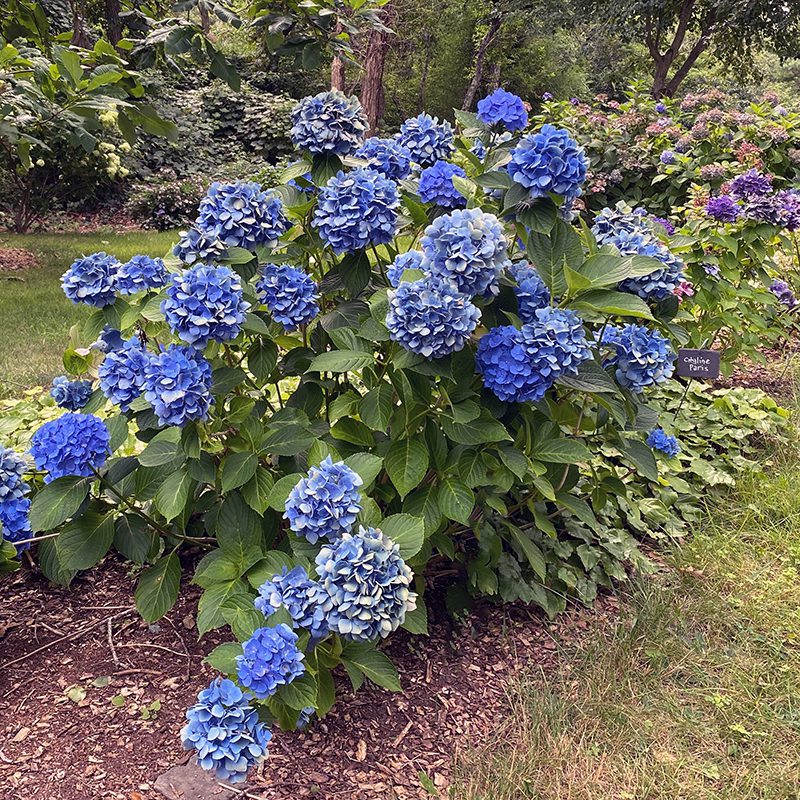
Subscribe To Our Newsletter
Sign up for our weekly email about sales and events.
